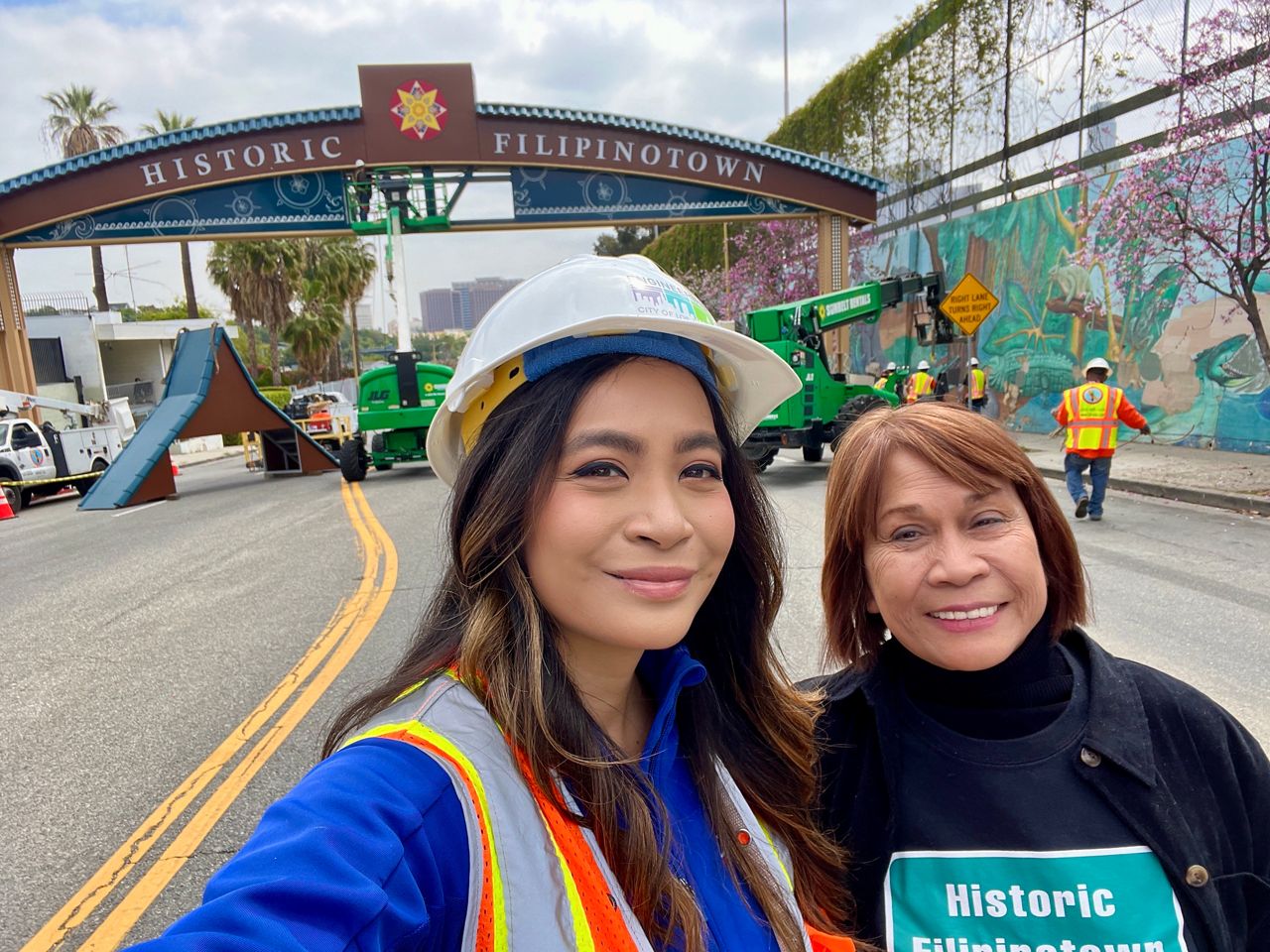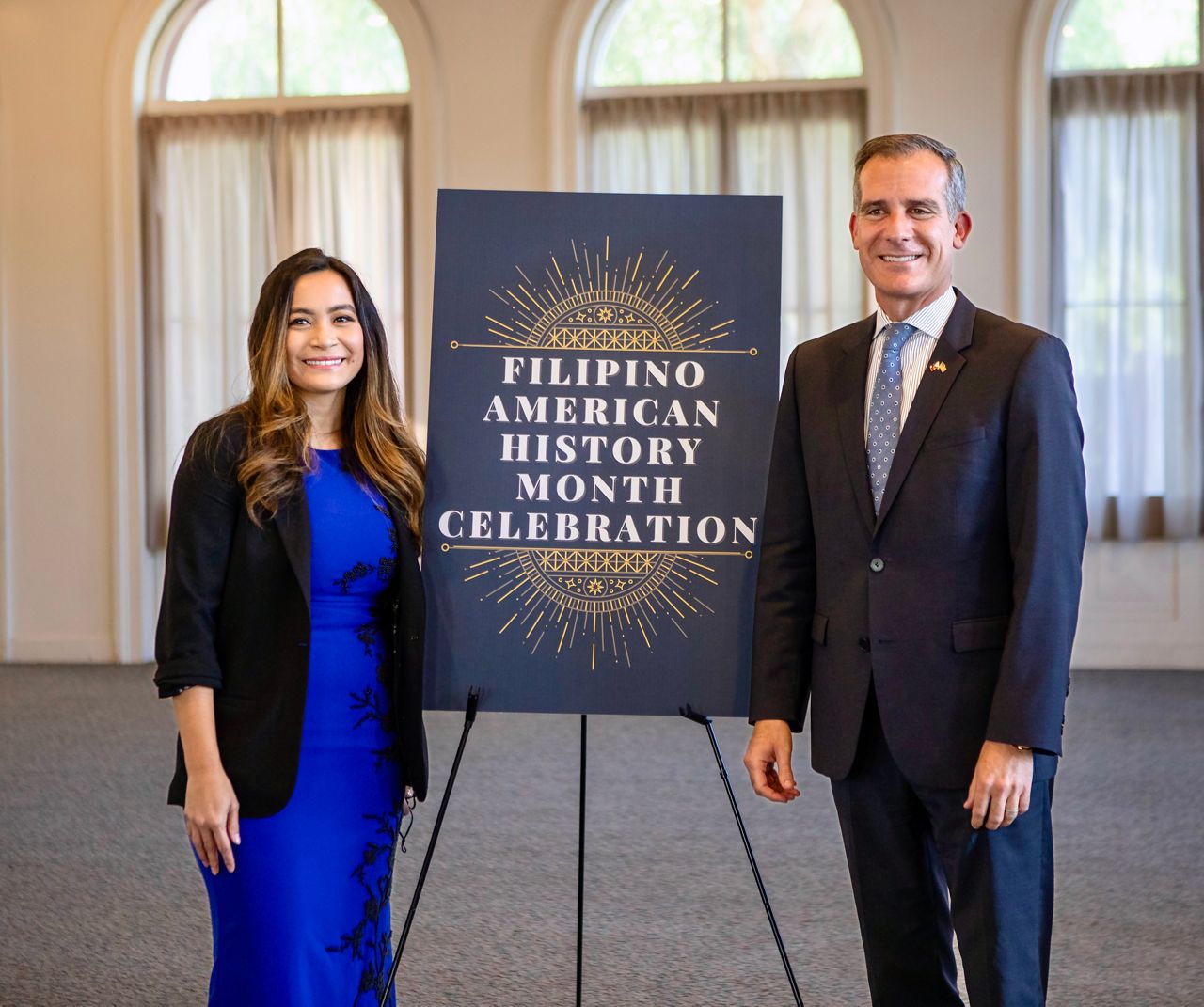EDITOR'S NOTE: Multimedia journalist Kristopher Gee spoke with a local artist about the archway. Click the arrow above to watch the video.
LOS ANGELES — When people see the new Historic Filipinotown archway over Beverly Boulevard, Jessica Caloza wants them to know this isn't just for the Filipino American community in Los Angeles.
The archway with a star in the center is for every immigrant community welcomed in LA, said Caloza, a former commissioner on the city's Board of Public Works who now serves as deputy chief of staff for California Attorney General Rob Bonta.
"It says, 'Historic Filipinotown,' and it is for Filipinos, but it's also for the broader immigrant community," said Caloza, a Filipino-American. "It really symbolizes that we belong here. The city of Los Angeles is a city of immigrants, and we have places like Historic Filipinotown, Koreatown, Chinatown, Thai Town, Little Bangladesh, etc. That is so unique to LA."
The archway titled Talang Gabay: Our Guiding Star spans 82 feet across and 30 feet high, over six lanes of traffic on Beverly Boulevard next to Belmont Avenue.
Filipino American artist Eliseo Silva designed the archway. Silva also painted the mural "Gintong Kasaysayan," a history of Filipino and Filipino American history on an office building wall at Unity Park on Beverly Boulevard in Historic Filipinotown.
The city spent more than $580,000 to create the 40,000-pound steel archway, said Caloza, adding that the money came from cost savings from other infrastructure projects. Public works will maintain the structure in the coming years.
The new landmark will serve as a gateway for people coming into the eastern entrance of Historic Filipinotown, a 2.1-square-mile-neighborhood on the edge of downtown LA.
At 4 p.m. on Saturday, state and local public officials will join Filipino American community leaders to unveil the archway officially. The public is invited to join the free festivities.

When Filipinos — many of whom were seasonal farmworkers and office workers — first arrived in LA in the early 1900s, the community settled in what was then known as Little Manila or now the Little Tokyo or Bunker Hill neighborhood.
The community was displaced in the 1920s and 1930s. But from the 1940s to the 1980s, Filipino immigrants began setting up residency in the Temple Street-Beaudry Avenue neighborhood — the area of what is now known as Historic Filipinotown.
No one knows quite sure how many Filipino immigrants settled in the area. However, some of the oldest Filipino-American organizations, churches and businesses are in the neighborhood.
Today, Filipinos are the minority in Historic Filipinotown. Most of the residents are immigrants from Latin and Central American countries and other Asian groups.
Many of the children of those early Filipino settlers moved to other Filipino enclaves across Southern California, such as Carson, Cerritos Eagle Rock, Panorama City and West Covina.
The city of LA designated the Temple Street-Beaudry Avenue neighborhood Historic Filipinotown in 2002. The area has several Filipino American landmarks, including a monument that honors Filipino World War II veterans in Lake Street Park, Silva's Filipino mural in Unity Park and the original Historic Filipinotown designation sign.
The new archway was a passion project for Caloza, who lives in Historic Filipinotown.

When Mayor Eric Garcetti appointed Caloza to the board of public works in 2019, Caloza wanted to find a way to merge infrastructure projects with history and culture.
"How do we mark our history through public spaces and infrastructure?" she said.
Caloza explained that the archway was something the community had wanted for nearly two decades. But it lacked funding and, most importantly, a high-ranking official to champion the cause.
"It needed funding, a design, community engagement, support, partners and approvals," she said. "I helped take a piece of the mantle on not only because it was important to me as a first-generation immigrant, but it's for [all] immigrants."
Caloza added that Garcetti and Councilman Mitch O'Farrell also championed the cause.
She doesn't just want people to drive by the sign. She wants them to stop and park and take pictures.
Aside from the archway, the city will install a storyboard on the street level where visitors with their mobile phones can scan a QR code and learn about the neighborhood's history. The storyboard will also point out other Filipino landmarks in the area.
Caloza said this archway is the embodiment of LA.
"It symbolizes what LA means — the hope, that dream, that this is a city that welcomes you," she said. "This is a city that not only wants you to survive but thrive. It is a city that celebrates our diversity. This is why we are a world-class city."



